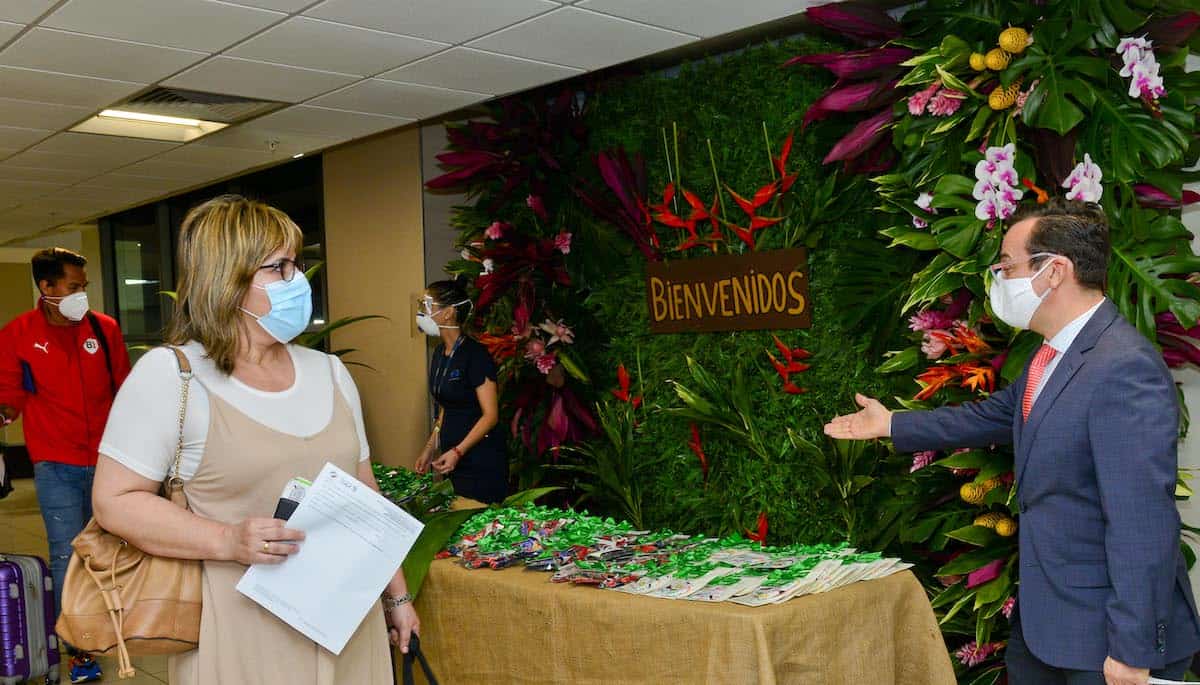Starting November 1, Costa Rica will welcome tourists from anywhere in the world. Visitors have to obtain travel medical insurance, but they no longer have to show proof of a negative coronavirus test in order to enter Costa Rica.
Click here for the official site describing Costa Rica’s entry requirements for tourists.
Costa Rica’s COVID policies hope to balance health with economic reactivation, but the relaxed tourist requirements come at a time when global coronavirus cases are skyrocketing and deaths are rising. (In Costa Rica, while deaths and new cases have remained high since September, hospital occupancy has decreased.)
In that context, we asked Costa Rica’s Tourism Minister, Gustavo Segura, three key questions. Here’s what he had to say.
The Tico Times: You’ve said tourists haven’t been coronavirus spreaders, but now you’re eliminating the requirement for a negative test. Does that make you nervous as the global panorama changes?
Gustavo Segura: “I’m not [nervous]. The decision is made with information. There’s a publication from the Pan-American Health Organization (PAHO) that says clearly that what is most important is that there are solid protocols to prevent the diffusion of contagion. The PCR test, taken three days before travel — that period creates a bit of risk, so it was not completely infallible.
“More than that, our gradual reopening showed that the tourists who entered Costa Rica — about 10,000 of them [since August 1] — have not caught the coronavirus in Costa Rica. We don’t have reports that any of them have caught the coronavirus via a tourist experience.
“We have a need to reactivate our tourism sector, because that reactivates our economy. The PCR test […] becomes an obstacle for travel, because it’s difficult to get a result within 72 hours. Looking forward to the necessary activation of the tourism sector, and having the positive experience of our pilot program, and given the PAHO publication, is why we made the decision.
“What is vitally important is that the protocols are followed seriously.”
TT: How has the profile of the average tourist changed during COVID-19? Is there a bigger desire for outdoor, open spaces?
GS: “Costa Rica already attracted that type of tourist. It’s not because of the pandemic that we’re highlighting the beauty of Costa Rica as a destination that is not crowded, that is open-air — we’ve always been that. But especially now in times of pandemic, tourists are asking where they can go to find a safe destination. And this is the right country.
“In addition to being a country of protected wildlife areas that are uncrowded, it’s a country with a solid health system. That’s why, while we have community transmission of the coronavirus, we have a low case-mortality rate. It’s a tribute to our health system.
“Costa Rica also delayed the arrival of widespread transmission for five months. That allowed us to reinforce the hospital capacity and allowed the private sector a chance to adopt safety protocols.”
TT: Some travelers have reported that airlines misunderstand Costa Rica’s entry requirements and prevent passengers from boarding. How is that handled?
GS: “The Tourism Board works with the Civil Aviation Administration (DGAC), and DGAC publishes the communications to the airlines so that they can adopt the changes. There have been cases of confusion — thankfully, just a few. Let’s remember that airlines are flying to 30, 40 different destinations, and sometimes it takes some hours to adjust.
“The important is correcting the misunderstandings. [This week] we’ve had many conversations with airlines to prevent additional confusion, especially with a look ahead to November 1, when we open our border to all the countries of the world.”






